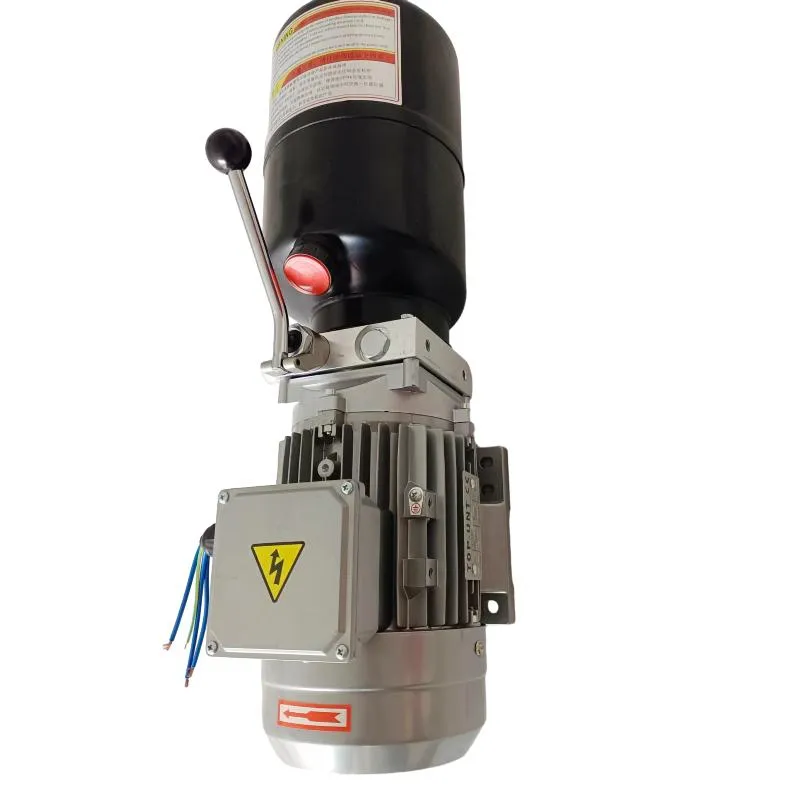Dec . 11, 2024 16:12 Back to list
Power Solutions for Stackers and Industrial Vehicles by Leading Manufacturer
The Evolution of Stacker Car Power Unit Technology
In the fast-paced world of logistics and transportation, stacker cars are indispensable, facilitating the efficient movement of goods in warehouses, distribution centers, and manufacturing facilities. At the heart of these stacker cars is the power unit, a vital component that leverages cutting-edge technology to enhance productivity, reduce operating costs, and ensure sustainability. This article delves into the advancements in stacker car power units, showcasing their importance in modern industrial operations.
Understanding Stacker Cars and Their Power Units
Stacker cars are specialized vehicles designed to lift and transport materials over short distances. They are widely utilized in various industries like retail, automotive, and pharmaceuticals. The ability to stack goods efficiently and maneuver within confined spaces makes them an essential tool for warehouse management and logistics optimization.
Power units are the driving force behind stacker cars. They convert electrical energy or fuel into mechanical energy, propelling the stacker car and enabling it to lift and move heavy loads. The design of these power units has evolved significantly, owing to advancements in technology, materials science, and engineering practices.
Traditional Power Units An Overview
Historically, stacker cars predominantly depended on internal combustion engines (ICE) or lead-acid batteries for power. While these traditional power units were reliable, they presented several challenges, including inefficiency, high maintenance costs, and environmental concerns. Internal combustion engines emitted pollutants, contributing to air quality issues in warehouses and compliance challenges with increasing environmental regulations.
Meanwhile, lead-acid batteries, though widely used, had limitations in energy density, weight, and lifespan. Businesses often faced downtime during battery replacement or recharging, impacting productivity and costs. As industries sought more sustainable and efficient alternatives, innovation in stacker car power units became imperative.
Advancements in Power Unit Technology
The shift towards electric-powered stacker cars has revolutionized the industry. Lithium-ion batteries emerged as a game-changing alternative, offering numerous advantages over traditional options. These batteries boast a higher energy density, longer lifespan, and faster charging capabilities. As a result, businesses can operate their stacker cars for longer periods without frequent downtime, significantly enhancing overall productivity.
stacker car power unit company

In addition to battery technology, the integration of advanced power management systems has improved energy efficiency. Smart control systems can optimize power usage based on load requirements and operational conditions. This not only extends battery life but also reduces the carbon footprint of warehouse operations.
Hybrid Solutions Bridging the Gap
While fully electric stacker cars are gaining popularity, hybrid power units have also emerged as a viable solution for industries that require sustained power for longer operations. These hybrid systems combine the advantages of electric power with the reliability of internal combustion engines. They can seamlessly switch between power sources, ensuring performance consistency while minimizing emissions.
Hybrid stacker cars are particularly beneficial in environments where long operating hours are essential, and charging opportunities may be limited. This flexibility allows operators to enhance efficiency while adhering to sustainability mandates.
Future Trends and Innovations
Looking ahead, the future of stacker car power units is poised for further evolution. The incorporation of regenerative braking technology, where kinetic energy is converted back into stored energy during deceleration, presents an exciting opportunity for enhanced energy efficiency. Additionally, the use of lightweight materials in constructing power units can lead to increased payload capacities without additional power requirements.
Moreover, the advent of the Internet of Things (IoT) in logistics stands to revolutionize stacker car operations. By enabling real-time data monitoring and predictive maintenance, IoT can optimize power usage, reduce unexpected downtimes, and provide valuable insights for asset management.
Conclusion
As industries continue to prioritize efficiency and sustainability, stacker car power units will undoubtedly play a crucial role. The advancements in battery technology, hybrid systems, and intelligent power management not only contribute to operational excellence but also align with global sustainability efforts. As the logistics landscape evolves, companies investing in innovative stacker car solutions will position themselves to thrive in an increasingly competitive environment. With ongoing technological developments, the future of stacker car power units looks bright, promising even greater efficiency and sustainability.
-
1.5 Ton Flipping Oil Cylinder 70/82-40-217-720-Hebei Shenghan Hydraulic Machinery|Precision Hydraulic Cylinder,Custom Hydraulic Solutions
NewsAug.29,2025
-
1.5 Ton Flipping Oil Cylinder 70/82-40-217-720 | Hebei Shenghan Hydraulic Machinery Co., Ltd.
NewsAug.29,2025
-
High-Precision [90/105-50-180-480] Industrial Component | Durable & Reliable
NewsAug.27,2025
-
High-Performance Set of 50/60-45-290 471 | Durable & Reliable Components
NewsAug.26,2025
-
Efficient Pallet Truck Power Units - Reliable Hydraulic Systems
NewsAug.25,2025
-
Premium Set of 50/60-45-290 471 Parts | High Performance
NewsAug.24,2025
